Misc Rover V8 pics
Here are some pics I've gathered showing interesting bits & bobs relating to the Rover V8 in its various guises.
 |
Intake elbows - how many varieties? The top one is from a P6, the middle one from a Stromberg SD1, the lower one from a Range Rover. Not only are the lengths different, but the bores vary too. I need a big bore (top or bottom) for the gas conversion, with a length of the middle one (SD1). I ended up cutting and welding the P6 one to get the length I required with the larger bore size. I suppose I could have used a Range Rover airbox with the Range Rover elbows.
 |
The dizzy on the left is a Range Rover type, the one on the right is an SD1 type. Although interchangeable, there is limited scope for adjusting the timing because the vac advance unit will foul on the water pump.
 |
Not strictly V8, but fitting a double cardan UJ on a propshaft where the two UJ angles are different will reduce vibration. This one is from a Discovery II.
 |
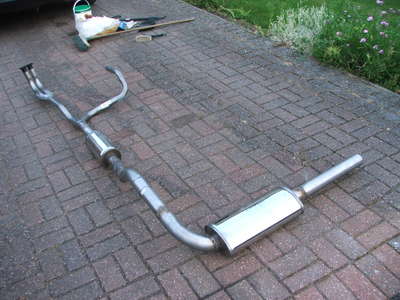 |
My rather splendid stainless steel 2.5" straight through exhaust. None of this sad boy pea-shooter crap that your average Corsa driver has.
 |
Thor vs Gems
 |
Thor
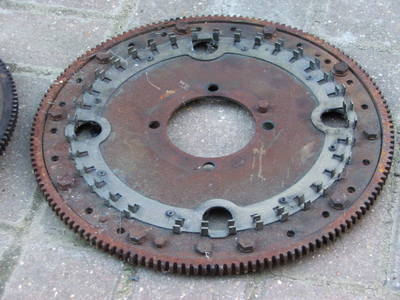 |
Gems
 |
Thor
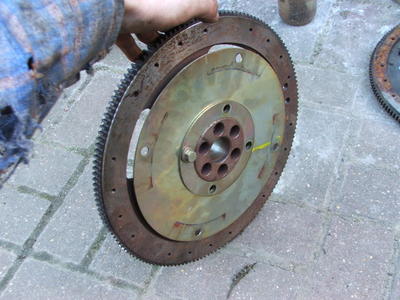 |
Thor
 |
Gems
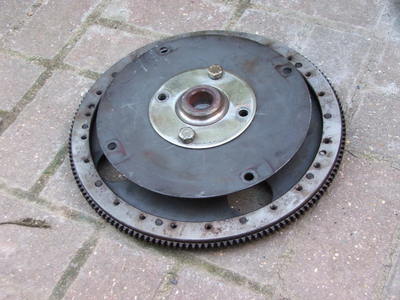 |
Gems
 |
Thor
 |
Gems
 |
Both!!
 |
Classic (i.e. pre-Gems) and Gems. The lack of holes in the flex plate on the Gems version makes detaching the torque converter a real pain as you have to do it through the small hole in the bottom of the bellhousing. I changed my torque convertor to have studs on it rather than threaded holes for the M10 screws.
 |
 |
 |
Gems - notice the index hole to make sure the gap is indexed on the correct cylinder
 |
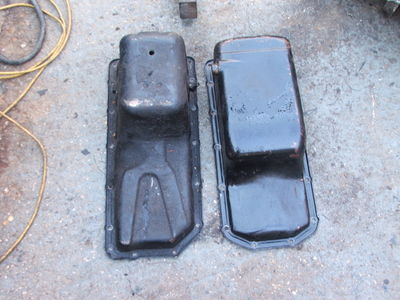 |
 |
Range Rover Classic sump vs Range Rover P38 sump.
 |
 |
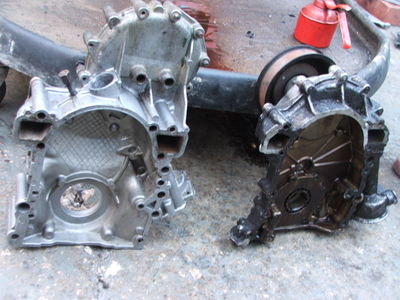 |
 |
Range Rover Classic timing cover vs Range Rover P38 timing cover assembly. There is a timing cover known as 'intermediate' which can have a distributor fitted, but has the newer type oil pump. Note that you need the right sump to match the cover.
 |
 |
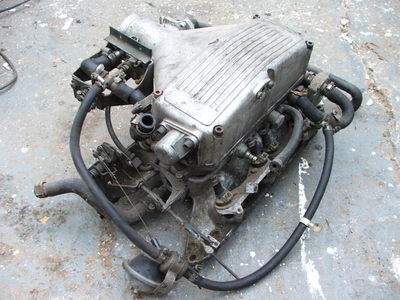 |
 |
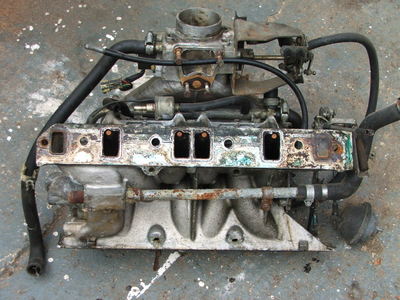 |
 |
 |
EFi inlet manifold (this one is from an SD1). It has the extra-air pipe to increase idle speed when the air-con is on, and also the vacuum operated cruise control.
 |
 |
 |
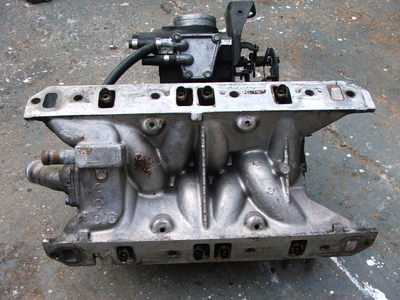 |
Gems inlet manifold
 |
 |
 |
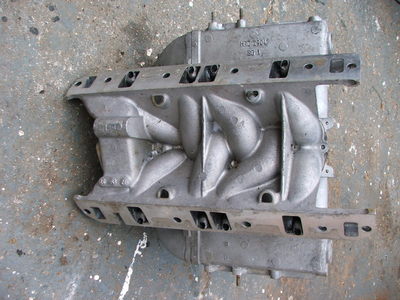 |
The later Thor (Bosch Motronic) manifold. Note the complex air paths on the underside view to give four equally spaced (in time) suction pulses on each side. It appears to be the inverse of the EFi and GEMS versions in that the end two stay on their respective sides and the inner two cross over.
Sherpa / LDV V& Exhaust Manifolds
 |
 |
These are the rare as hens teeth LDV V8 exhaust manifolds. The earlier (non-PAS) Freight Rovers used the Range Rover single exit manifolds, but when PAS was fitted the PAS box becomes too close to the manifolds. So these were fitted instead. I don't know if they were ever fitted to anything else, the part nos are HRC2812 and ERC2881. Note how the exit from No.2 stays at port height and joins No. 4. They probably flow like a dog!
Some cylinder head cross sections so you can see where your porting efforts are best applied:
 |
 |
 |
 |
There seem to be two valve seat heights, I'll call one 'low compression' as the seat is recessed to increase the volume, and the other 'high compression' as the valve sits proud and gives a reduced volume. Whether there is any impact on the rest of the valve train, I don't know.
Low compression
 |
High compression
 |
EFi heads have a small notch in the top of the inlet port to clear the injector spray pattern
 |
Interesting tuned stub on GEMS air intake pipe
 |
This is how I extract / refit gudgeon pins
 |
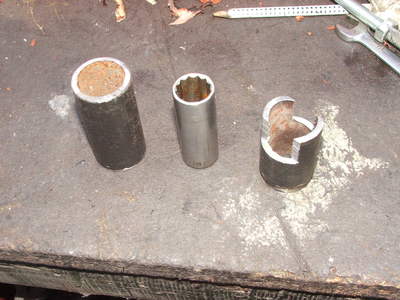 |
Drawing in / out a cam bearing...
Comparison of the front of distributor and distributorless camshafts
 |
 |
GEMS style camshaft retaining plate
 |
Checking camshaft timing is as expected
 |
 |
4.0 vs 4.6 conrods. The 4.0 litre ones are a fraction longer and have two dots:
 |
 |
Length of a GEMS timing cover + waterpump. Measured as 5.5inches from the front of the block to the front of the water pump shaft
 |
Pressure testing a block. I've blocked up the holes on the block desk, and have the air-line pressurising the water-pump inlet holes. And put the whole thing in a large bucket of water. Works very well.
There seem to be a couple of variations on the GEMS style timing cover. I rather think one is Range Rover, one is Discovery, so maybe one is actually from a Thor engine?. Anyway, the differences are that one has an extra piece to angle the oil filter, and an additional port for an oil pressure sensor.
 |
 |
 |
 |
When fitting a different camshaft, it's a good idea to check valve to piston clearance. I have found that having a head with a bit cut out so you can see in there makes this rather simpler:
 |
 |
Some of the tooling I knocked up to remove / refit valve guides. To remove, I pressed them out with a socket. I fitted an extension bar into the socket and threaded it through the guide to keep the socket located centrally whilst setting it. For refitting, I used a guide welded inside a piece of pipe, and used a valve stem to locate centrally.
 |
 |
This one comes up a lot - 'which way do I wire the two pins on my ignition amplifier?'. Well, the answer is the white/black is coil -ve and rev counter. The white is the +ve ignition feed and coil +ve.
 |
